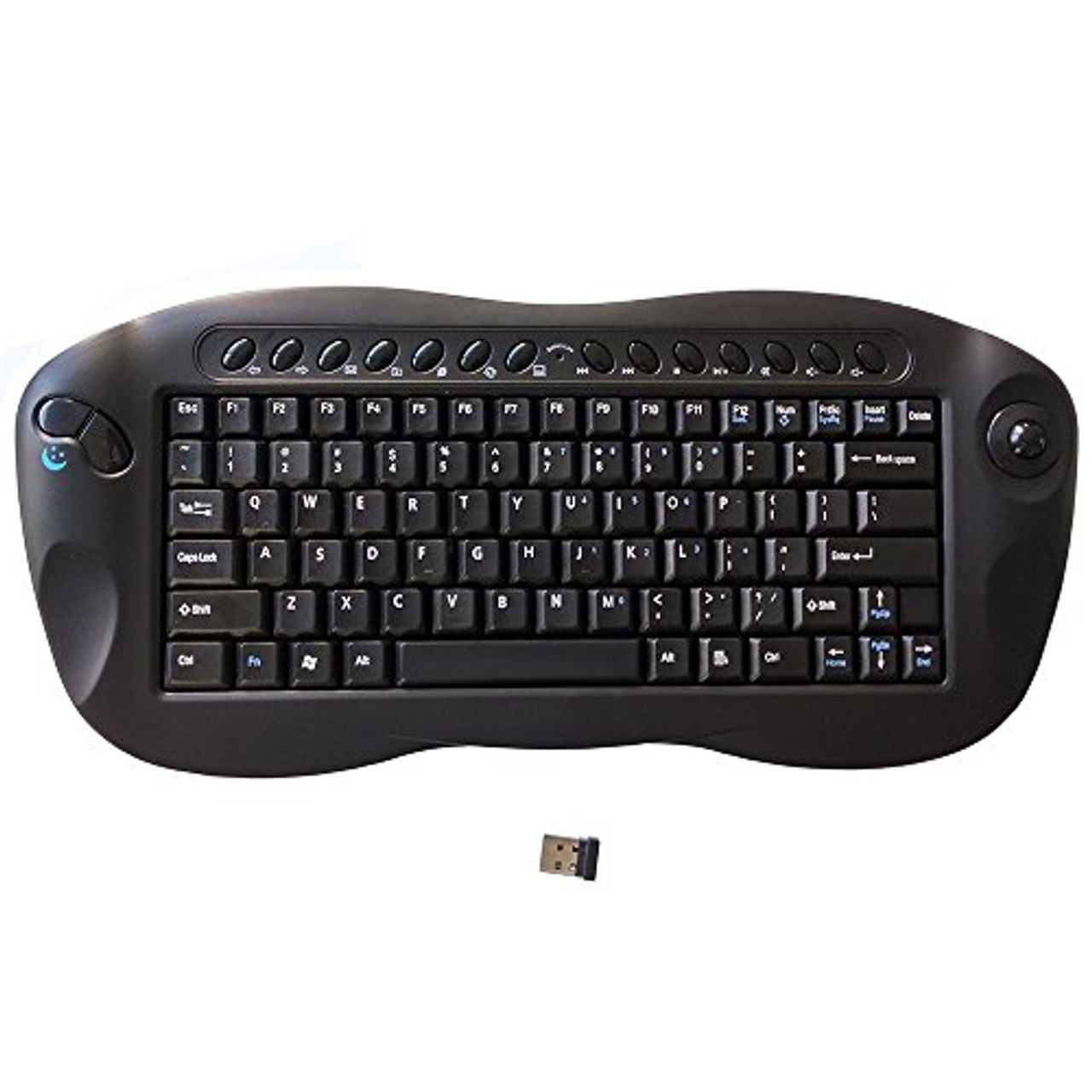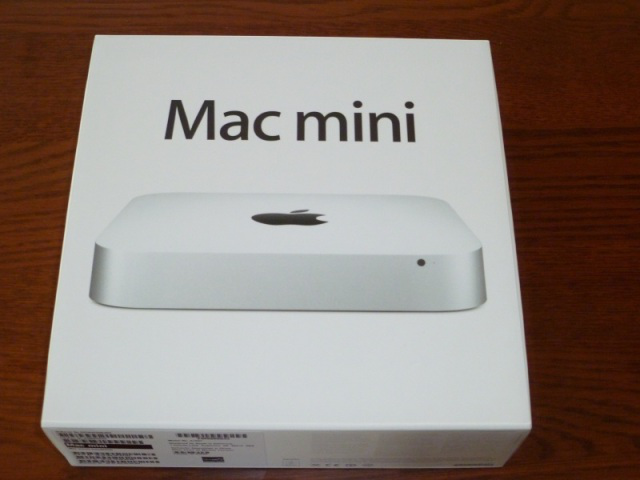Htpc For Mac
We received a lot of great comments in response to our article on turning a Mac mini into an HTPC that rivals Apple TV. It also brought up some questions that I thought deserved addressing.
Htpc For Mac Download
APEX DM-387 Black Steel Micro ATX Media Center / Slim HTPC Computer Case w/ ATX12V TFX 275W Power Supply. Power Supply: Flex 275W Motherboard Compatibility: Micro ATX / Flex ATX / DTX External 5.25' Drive Bays: 1 External 3.5' Drive Bays: 1 Model #: DM-387 Item #: N4087 Return Policy: Standard Return Policy $56.99 –. SILVERSTONE Black Aluminum skin reinforced plastic front panel, 0.8mm SECC body MILO Series ML03B Micro ATX Media Center / HTPC Case. Motherboard Compatibility: Micro ATX, Mini-DTX, Mini-ITX External 5.25' Drive Bays: 1 (compatible with one 3.5' HDD or two 2.5' HDD/SSD) Internal 3.5' Drive Bays: 2 (compatible with one 2.5' HDD each) Expansion Slots: 4 low profile +1 utility. A Mac Mini as a home theater PC showing Apple's discontinued Front Row interface PC meant to be used in a home theater setting A home theater PC ( HTPC ) or media center computer is a convergent device that combines some or all the capabilities of a personal computer with a software application that supports video, photo, audio playback,. Mac A Macintosh computer with an Intel Core Duo processor 1.6GHz or better At least 1GB of RAM Mac OS X Snow Leopard 10.6.3 or newer. Next: Find out which cables are best for hooking your PC up to. If there are any Mac Mini HTPC owners out there, I'd love to hear from you and what you've learned, any suggestions. I'm a bit bummed right now with my Mini HTPC. I recently sold my jailbroken Apple TV because I decided to use my Mac Mini as a HTPC (just wasn’t using it.
Why Mac OS X?
Something that we failed to address in the initial article is the question of why you might want to use Mac OS X for an HTPC in the first place. After all, there certainly are a lot more Windows-based options. For me, it's an issue of workflow and compatibility. Since I use a Mac for all of my editing and encoding, using Mac OS X for my HTPC allows me to make use of Mac-only features like labels to indicate the resolution of video, and AFP as my transfer protocol (which has been more reliable on my home network, though your mileage may vary). But what really seals the deal for me is the wide support for H.264-based .mp4 files in practically any Mac-based HTPC. As long as we're talking about standard definition files, I can have one file that works both in my HTPC and on my iPod, allowing me to easily take my video files with me without transcoding. If you've ever taken a stack of DVDs on a family vacation for use with an in-car video system to entertain the kids on a 12-hour car ride, only to return with a scratched and ruined pile of ash that used to be your DVD collection, you'll no doubt understand the value of leaving the DVDs at home.
Making the Connection: Standard Definition
Several of the comments in the initial article revolved around how one goes about connecting a Mac mini to a TV. The answer to that is going to depend a lot on the TV in question. While Arsians certainly trend toward the early adopter, I'm betting that a lot of you reading this are still using standard definition CRT TVs. In that case, the hardware side of the equation is deceptively simple. You just need this $20 adapter from Apple. It plugs directly into the DVI port on the back of the mini and gives you a composite and S-Video connection on the other end. It's worth noting that this is not converting the DVI single into a composite signal; the mini's DVI port actually includes an S-Video connection in there and the adapter just makes use of it. In other words, this adapter won't work on a regular DVI connection, so don't get any bright ideas. From there you just need an S-Video or composite video cable to connect directly to the TV.
Making the Connection: High Definition
If you have a high definition TV, you will usually just need the correct cable. HDMI, DVI, and 15-Pin Dsub (the classic computer monitor connection usually labeled VGA) are all fairly common on HD displays. If you have a DVI connection labeled as PC Input, that's likely to be your best bet since it will be treated just like a standard computer display. HDMI is the next best choice (since it's essentially just a specialized DVI connection), and it's easily adapted to the mini's DVI with inexpensive adapters or cables, though doing so will strip out the audio signal normally carried by HDMI. It's increasingly rare to see a VGA connection on HDTVs, but the adapter included with the mini will meet your needs just fine.
Regardless of your connection method, your audio signal will be handled separately from the video. Audio is handled either with the headphone out for stereo audio (combined with yet another adapter to adapt 3.5mm headphone to RCA), or the extremely handy optical out (let's hear it for another adapter) that you can feed directly into your receiver. If you don't have a separate receiver handling your audio, the former will be your best bet. If you'd like the surround sound from your DVDs to remain intact, then optical is the only way to go, though keep in mind that only MediaCentral supports using optical out directly (using DVD Assist in conjunction with Front Row also works).
Common Audio Connection Methods

Resolution and Overscan
Once you've made the physical connection, you'll need to adjust how the picture is displayed. This can be one of the most time-consuming aspects of setting up your HTPC and worth considering ahead of time if you're in the market for a new TV. In most cases where you use the PC Input connection, the mini will be able to automatically choose the correct resolution for your display. Fixed pixel displays, which should include any LCD, plasma or DLP display, will look their best at one particular resolution and you should try to match this resolution if you can. You may be able to find this in your TV's manual or by hitting up ye olde Google. If your mini doesn't come up with the correct numbers on its own, you may need access to resolutions not normally found in the Displays system preference. If that's the case, SwitchResX could be your best friend. It can also be your worst enemy since you can easily damage your television, so be careful and listen to the warnings it gives you.
With a CRT TV, you'll also have to deal with overscan. Analog television signals have a level of imprecision built into them, which a CRT TV deals with by hiding the edges of the tube. In other words, anywhere from 5 to 15 percent of the picture in a traditional television is cut off depending on your display.
Analog TVs may cut off as much as 15% of the picture.
Anyone producing content for television has to be aware of the title safe and action safe areas to avoid putting important information there, whereas computer displays have always been able to take full advantage of the screen. In order to deal with this discrepancy and to make sure you can actually see the menu bar, your mini's desktop will likely be shrunken and displayed with a black border all the way around its edge, which is called Underscan. You can tell your mini to push the display to the edge of the tube by checking the Overscan check box in the Displays system preference (you'll only see this with the S-Video adapter we talked about earlier), but be aware the this will almost always put the menu bar out of sight. Also, many of the front ends we talked about assume a digital display, so the overscan won't look very good. For example, in Front Row, the icon at the top of each category gets cut off on my CRT TV.
Makes you want to invest in that plasma, doesn't it?
The aforementioned fixed pixel displays should not be affected by overscan. However, I have read some reports of this happening, most notably in Jason Snell's article for MacWorld where he asserts that this is the main reason he prefers Apple TV to a Mac mini-based solution, though I have no explanation for why this would occur on a fixed pixel display.
Uh... I'd like to watch something now?
Htpc For Mac Pro

The single most common request I received in response to the original article was asking for some help getting content to the Mac mini. Once again, the route you take will depend on where you want to start and where you want end.
DVD
The simplest solution for getting a DVD collection onto your HTPC is going to be Handbrake aka MediaFork aka Handbrake. Handbrake allows you to encode a DVD (even encrypted discs, which we'll talk about more later) into a single file so that managing and playing titles is eased as well as saving you quite a bit of disk space. Handbrake focuses on MPEG-4 or H.264-encoded .mp4 files, which give excellent efficiency (i.e. great looking files for relatively small files sizes). There are some downsides to going this route though. You'll be losing all the extras normally included on a DVD, including AC-3 audio (surround sound) and chapter markers. While you can encode additional audio tracks (i.e. commentary) in Handbrake, none of the HTPC interfaces we covered supports switching between them, so it's a moot point. You're also losing some visual quality, though you'll have to have a fairly discerning eye to tell. Still, the bigger the screen, the more this will be an issue so it's worth keeping in mind.
If you're looking to retain extras or the maximum amount of quality from your DVDs, you'll want to pull an exact copy of the DVDs' contents to your hard drive. The challenge is that most publishers of feature films fear that you'd use any such copy to pirate their films, so they've gone to great lengths to prevent you from doing so by encrypting practically every DVD released by a major publisher. MacTheRipper is the traditional solution for decrypting the contents of the disc and saving the contents of the DVD, which are contained in a Video_TS folder, to your hard drive. Despite the gains in quality and functionality, the downside to this route is that support for playing a Video_TS folder is not something you can take for granted in any media player, and especially in a HTPC interface. And file size also becomes a major issue, as DVDs are generally between 4 and 8GB, versus less than 2GB for your average feature film in a .mp4 file.
MacTheRipper is an essential tool for a HTPC, especially in conjunction with other tools. For example, it allows you to take advantage of Handbrake's queue support, which allows you to give Handbrake a series of Video_TS folders to process in sequence. Its ability to remove region restrictions will also serve you when Handbrake refuses to rip a DVD from another region. It's worth noting that you may have to jump through some hoops to get the most current version, but a few minutes with Google should take care of things.
TiVo
As I mentioned in the HTPC article, my PVR of choice is still TiVo after all these years, so a common task for me is to get programs off of TiVo on onto the HTPC. Step one is to get the files off of the TiVo, which can be accomplished with the the pricey TiVoToGo included with Toast 8, or the free TivoDecode Manager. Combined with AppleScipts or Automater, you can automate the entire process of downloading, encoding, and moving files to your HTPC—a process that works equally well in conjunction with your Apple TV as well.

I personally like to edit out commercials before adding a show to the library, so I use TDM to download and decrypt the files direct from my TiVo,. This is where you'll run into problems. The MPEG-2 files that TiVoToGo uses do not conform to what QT believes a MPEG-2 file should be, so any QT-based video editing application (which is pretty much all of them for Mac OS) will fail to properly decode the file for editing (including the otherwise-excellent MPEG Streamclip)—you'll need to use an intermediary format. This is probably for the best since MPEG-2 can not support frame accurate editing, even if you could. But even this can be a challenge as most encoders for the Mac are also QT-based. Those that are not QT-based seem to focus primarily on distribution file formats that are unsuitable for editing. The only acceptable solution I've found that can encode the TiVo MPEG-2 into a high-quality format is 3ivx Crush and Telestream's Episode, neither of which are cheap but both support exporting to a more suitable format for editing. From there, you can use Final Cut or any other NLE to edit and encode your files. I've been fairly pleased with the results of using MJPEG on the sometimes less-than-perfect recording, and Episode's H.264 encoder is excellent. The only frugal option with acceptable quality that I've been able to come up with is using VisualHub to encode to DV and then using iMovie to edit.

EyeTV
Htpc Mac Mini
EyeTV is by far the most dominant PVR for the Mac (though Miglia and Equinux look like they may be trying to change that), so there's bound to be someone interest in getting video from there into your HTPC. It's actually pretty simple, as EyeTV provides direct export of any recording right to iTunes. EyeTV is also extremely scriptable, allowing you to once again automate the entire process directly to an Apple TV or HTPC. I found this thread in the MacScripter forums to be wildly helpful in that regard.
Wrapping it up...
Hopefully this will help you get started on hooking up the mini to the mac. I think there's at least one more article to come with more specific instructions on the whole automation procedure for TiVo to HTPC (or Apple TV), but if there's something else you're interested in, let us know in the comments.
I can't speak to the gaming aspect, but I've been using a 2011 mini as an HTPC since those were released, and haven't looked back. I use Plex and Plex Media Server, which I can also use to stream to the AppleTVs I have spread around my house. It's fantastic. I'm actually thinking about putting the mini in my network closet and putting an AppleTV in its place because the interface is so much simpler for my kids and in-laws to use on the ATV.
Htpc For Macbook
Htpc Mac
Speaking about the technical aspects, you mentioned large MKVs, and I can tell you it hasn't mattered to this point how large the files are...I've opened 48GB files and played with no issue.
Htpc Keyboard For Mac
Jul 8, 2013 9:58 AM